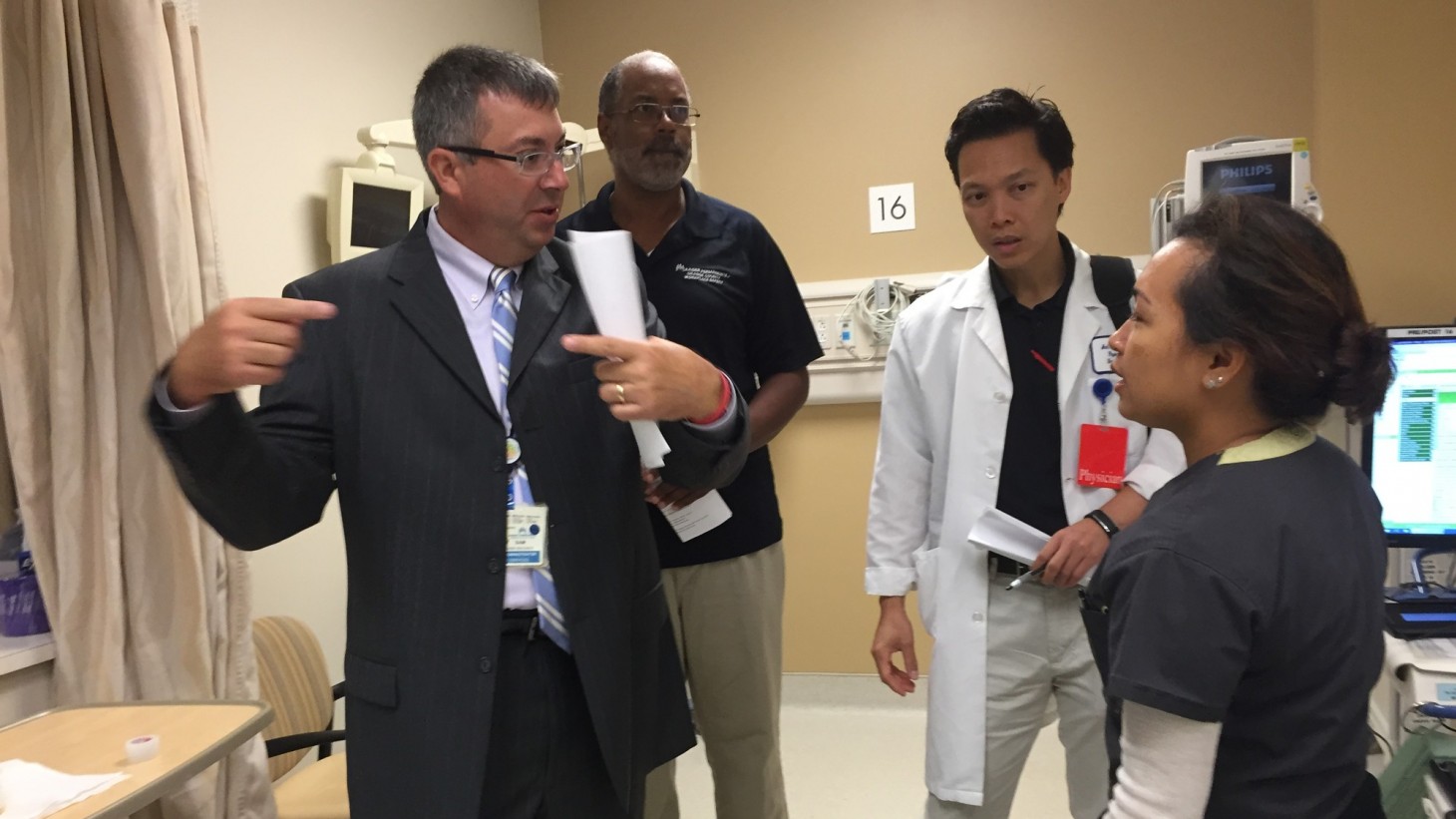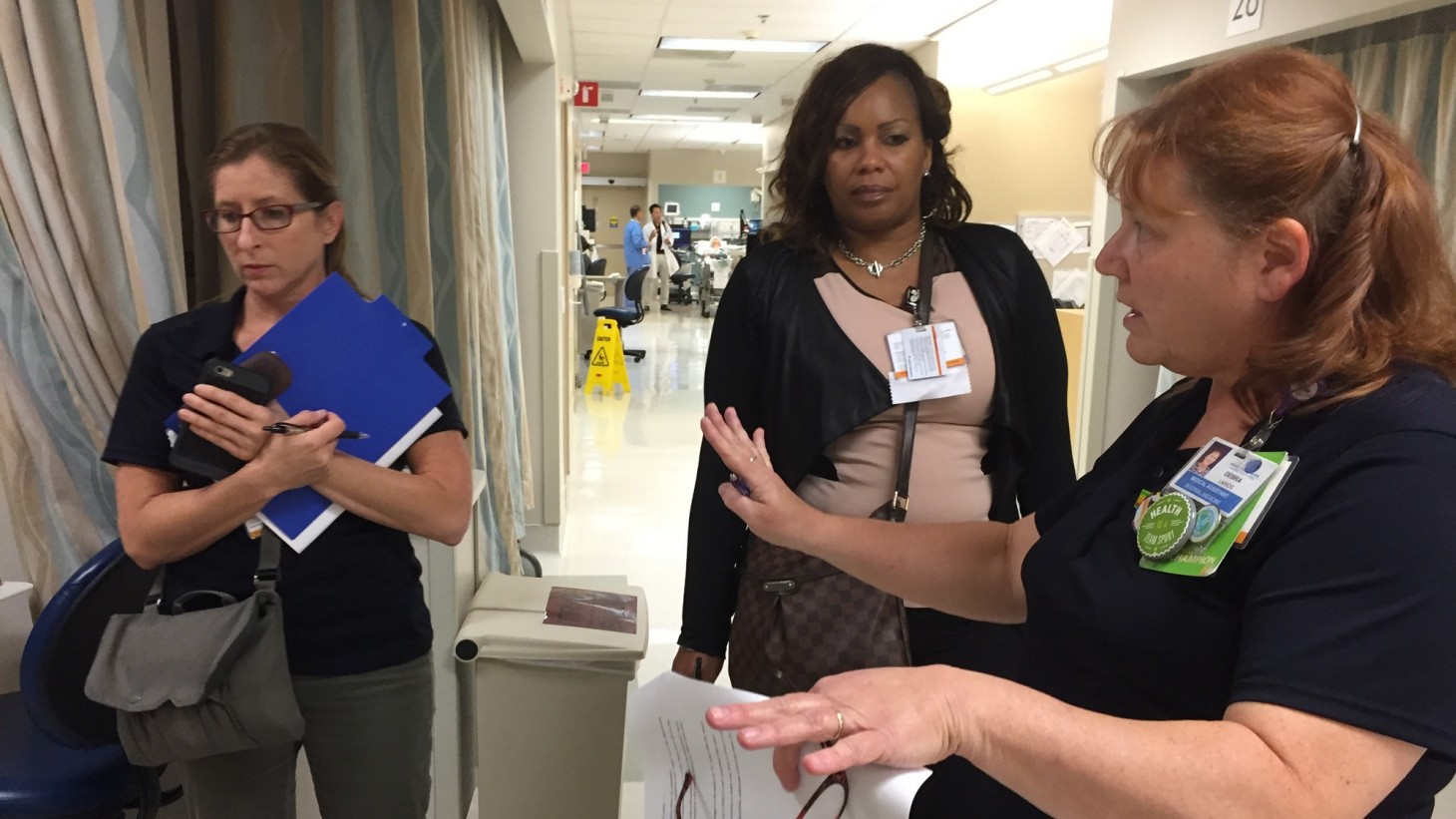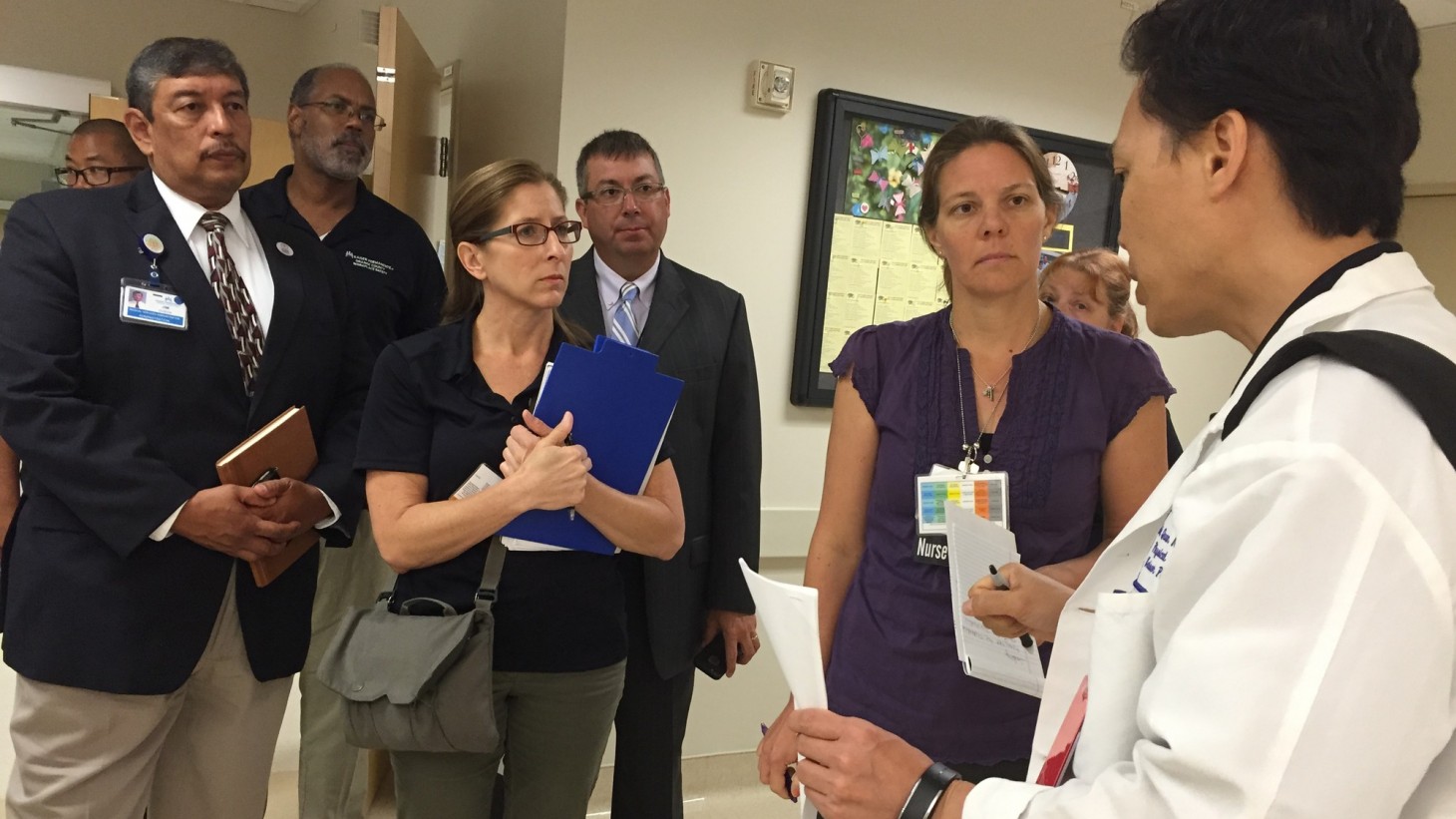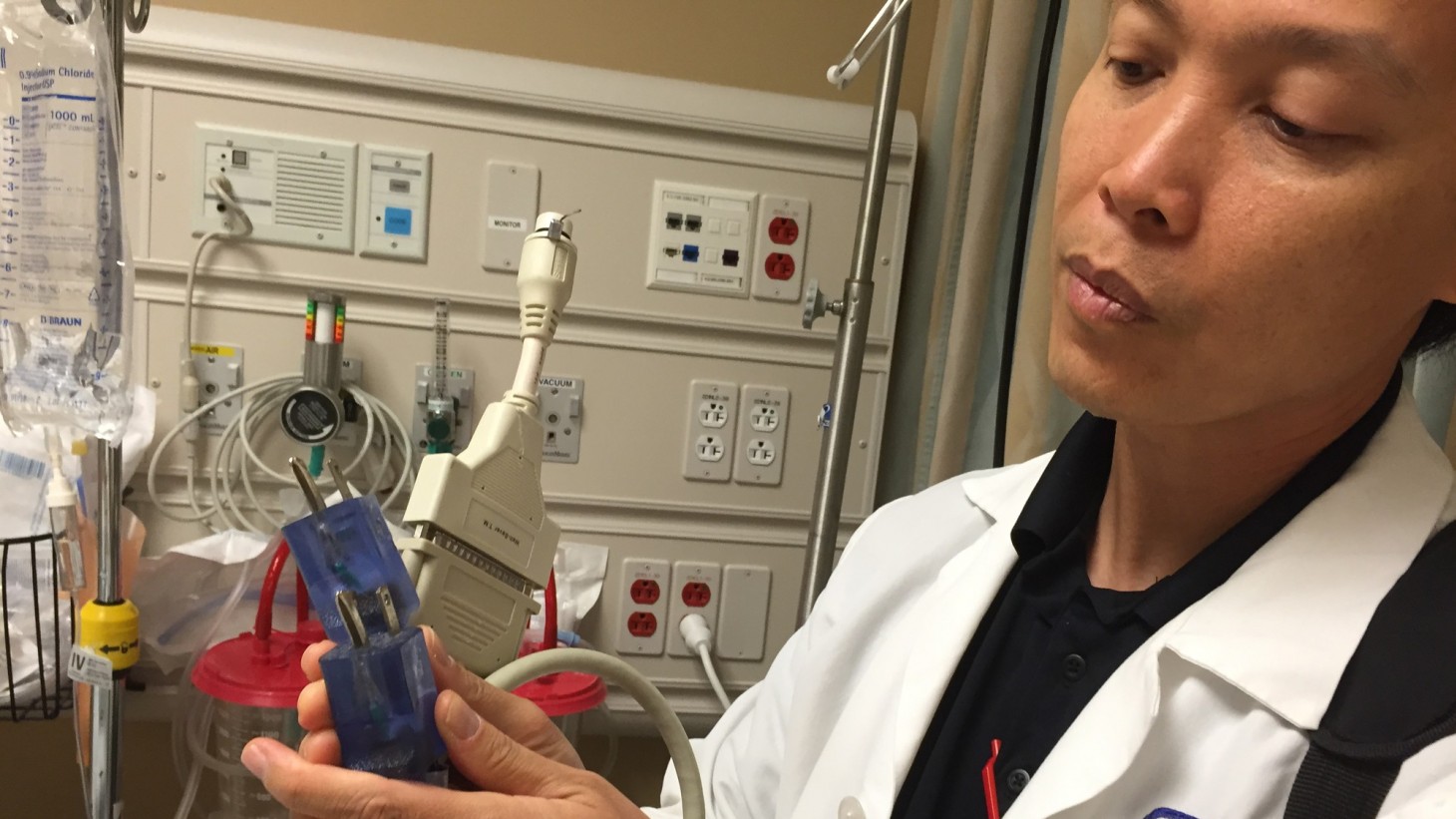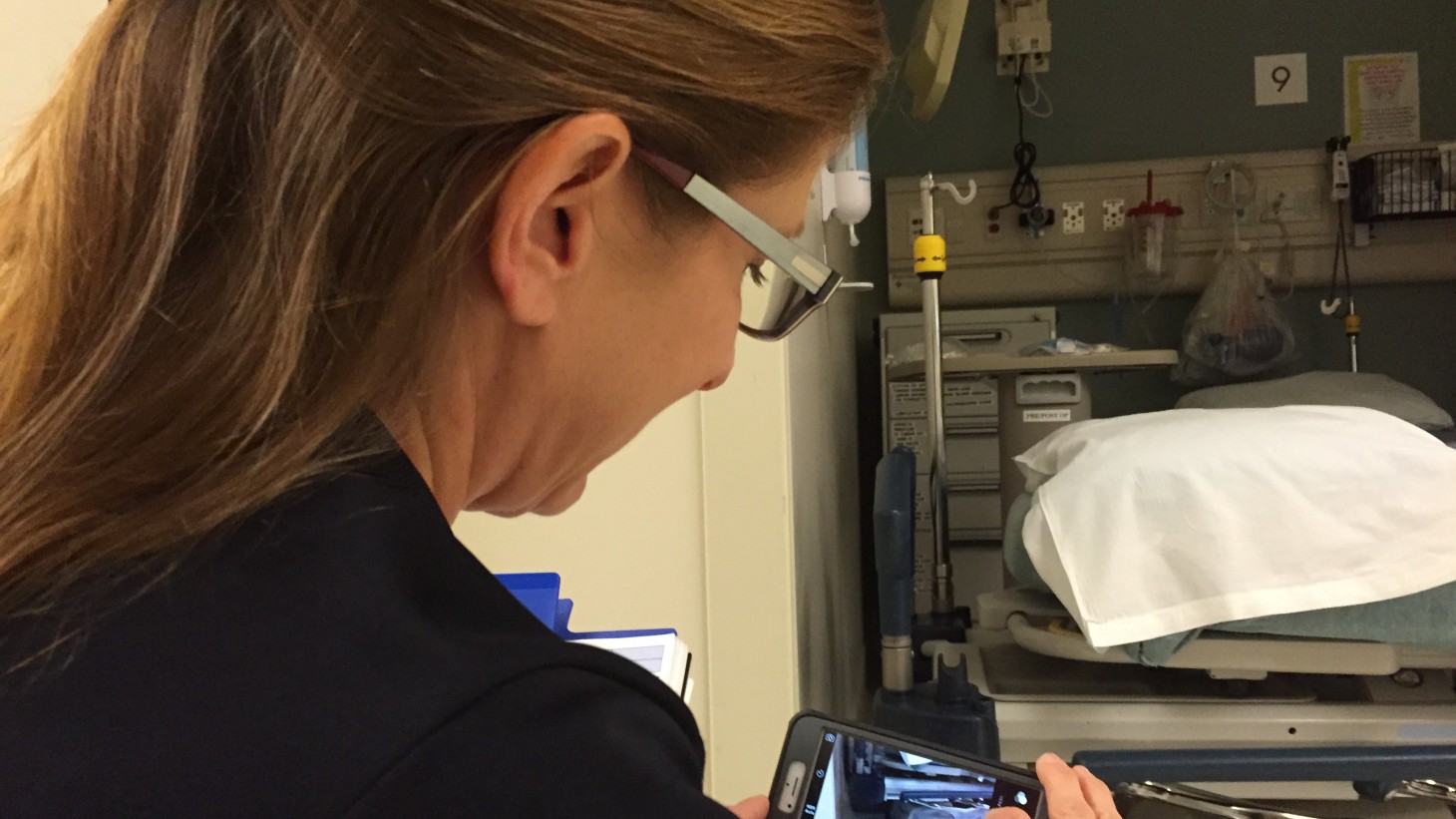Father’s trauma inspires joint effort to create safer workplace
Quan Nguyen, DO, learned in seventh grade how devastating a workplace injury can be. His father, a carpenter, severed part of his thumb when he lost control of the power saw he was using. The accident put him out of work for a time and forced the family to stretch its skintight budget even further.
Years later, the memory inspired him to join Orange County’s Workplace Safety Steering Committee, says Dr. Nguyen.
“I’ve witnessed, firsthand, how things at work can lead to pain and suffering for the person and his family,” says Dr. Nguyen, a physical medicine and rehabilitation physician at the Chapman Medical Offices in Orange, California. “We’re like a big family at work and I don’t want to see people hurt.”
Team visits worksites to improve safety
As the sole physician on the 12-member committee, Dr. Nguyen uses his singular perspective to engage physicians and others to build a culture of workplace health and safety.
“He’s very unique,” says Jim Ovieda, assistant medical group administrator and the committee’s management tri-chair. “He brings another voice of authority to the conversation.”
Four years ago, Dr. Nguyen helped form the Tiger Team, a task force of union members and managers who visit units with high injury rates and offer expert advice on how to reduce risks. They developed a simple process to identify and address workplace hazards at the local level (see “Five Tips for Workplace Safety Site Visits”).
“It’s not a punishment. We’re there to help departments succeed and to help our staff and physicians to be safe,” says Dr. Nguyen, who named the Tiger Team in honor of “Tigger,” the fictional tiger character who bounces around and helps others.
Collaborating with frontline union members is vital to keeping everyone safe, says Dr. Nguyen.
“There seems to be two cultures inside the hospital – the physician and non-physician. We’re trying to bridge those two cultures by bringing together a diversity of voices to improve the culture of health and safety for everyone,” says Dr. Nguyen.
Host teams say the visits and ensuing discussions help create an environment where everyone feels comfortable speaking up—essential to building safety into daily work.
Partnership approach gets results
The team aims for six site visits a year and had conducted 31 visits as of November 2015. Most of those departments reported significantly fewer injuries in the months after the visit; many reduced injuries by 50 percent or more. The approach has gained attention region-wide and other medical centers in Southern California are adopting the practice. The team also presented its partnership approach at the 2016 National Workplace Safety Summit.
“It’s a way of taking the pulse of the department,” Ronald Jackson, a medical assistant, SEIU-UHW member and the steering committee’s labor tri-chair, says of the team's site visits.
“We bring a fresh set of eyes to the department,” says Albert Alota, workplace safety coordinator for Orange County.
Three practical solutions
Recently, the committee’s labor and management members sat side by side reviewing workplace safety records for the Irvine Medical Center’s recovery room. The department had accrued nine injuries in as many months, three of them involving employees and gurneys. The team identified several hazards related to work space and storage and recommended ways to fix them. For example:
- To address heavy traffic down narrow hallways and around blind corners: Provide standardized traffic flow for gurneys, mirrors at key intersections and a recognized verbal cue to alert bystanders to passing gurneys and equipment
- To unclog crowded patient bays that forced staff to work at laptops in busy hallways: Install wall-mounted computers and exam stools to replace the office chairs in the room
- To reduce injuries caused by incorrect use of new gurneys: Ask vendors to help train staff how to safely operate new equipment
Employees appreciate the attention. “It’s good to have the team come in,” says Sol Estrella, RN, a staff nurse and UNAC/UHCP member. “It shows that management and higher-ups are responding to our staff needs.”

